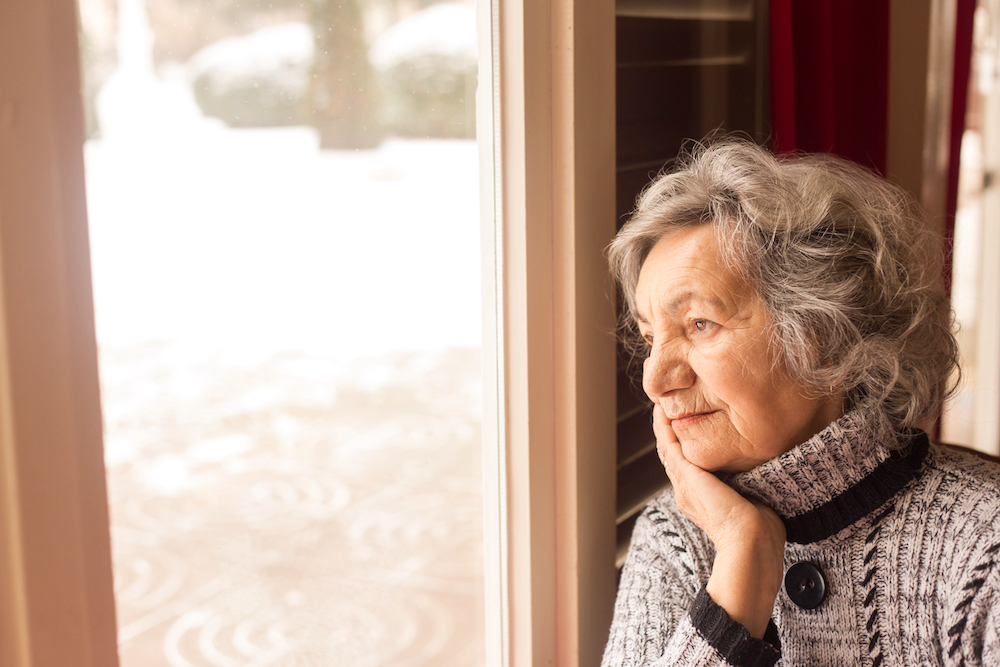Seasonal Affective Disorder (SAD) is a kind of depression that is linked to the changing of seasons. SAD occurs at roughly the same period each year. Suppose you’re a senior suffering from SAD. In that case, your symptoms might begin in the fall and last through the winter, sapping your energy and making you cranky.
In seniors who have not been diagnosed with persistent depression, SAD can cause depression and anxiety. Although not everyone who suffers from SAD is clinically depressed, it can exacerbate individuals who suffer from chronic depression. During the winter season, carers must watch for signs of SAD in their elderly loved ones. SAD symptoms include a lack of interest in previously loved activities, changes in food or sleep, sorrow, worry, exhaustion, hypersensitivity, and thoughts of despair.
SAD is less likely to cause depression in the spring and early summer. Light treatment, medicines, and psychotherapy may be used to treat SAD. Don’t dismiss that yearly sensation as a case of the “winter blues” or a temporary sadness you’ll have to get over on your own. Instead, make efforts to maintain your motivation and energy throughout the year.
Patients over 65 who require home care or hospitalization to address their ailments are at a higher risk of depression. In addition to the challenges that a chronic disease might bring, seniors are more prone to endure losses in social networks, contributing to the development of clinical depression. With aging, the brain can also undergo chemical changes that might contribute to depression.
SAD Symptoms
- Appetite fluctuations
- Weight gain or decrease
- Problems at school or work
- Boredom and a decreased energy
- Sleeping problems, such as insomnia
- Getting sluggish
- Overreacting or agitated
- Substance abuse
- Can’t concentrate
- Having a sad mood
- Suicidal thoughts
SAD Causes
SAD may be easier to treat than other depressive illnesses since it is a transient syndrome with clear signs. Various variables lead to the development of SAD, the most important of which is a lack of sunshine. People get less sun exposure in the winter due to harsh weather, fewer hours of sun, and the sun is a greater distance from the earth.
Less exposure to sun has the following effects:
- Deficiency of vitamin D. Vitamin D is a necessary mineral for humans of all ages. Still, it is especially crucial for the elderly. This vitamin aids the body’s absorption of calcium, which is essential for bone health.
- Because natural sunshine may deliver vitamin D, the decreased daylight hours of winter can contribute to this deficiency. When the body does not feel as wonderful as it should, it might increase depressed feelings.
- Your biological timer (circadian rhythm). The decreasing amount of sunshine may cause Winter-onset SAD in the autumn and winter. This decrease in the sun may cause your body’s internal clock to malfunction, resulting in feelings of despair.
- Serotonin levels are high. SAD may be caused by decreased serotonin, a brain chemical (neurotransmitter) that modulates mood. Reduced sunshine can induce a decline in serotonin levels, which can lead to depression.
- Low Serotonin. Serotonin is a brain neurotransmitter that helps control mood. Serotonin levels might decline due to a lack of sunshine, resulting in a serotonin imbalance that causes a person to be depressed.
- Melatonin levels are low. The changing of the seasons can upset the body’s melatonin balance, which affects sleep habits and mood.
- Disrupted Sleeping: Sunlight significantly impacts a person’s circadian rhythm, which determines how well he sleeps. Reduced sunshine can cause a senior’s sleep cycle to be thrown off, resulting in a lack of quality, healthful sleep, leading to sadness.
SAD Treatment Options:
Light Treatment or Phototherapy
Light treatment is the most popular treatment for SAD. Phototherapy that simulates sunshine is used in light therapy. This light encourages your body to generate molecules that are activated by the sun, such as serotonin. Melatonin levels are also reduced. Because melatonin makes you tired, light therapy can help you stay awake. SAD symptoms can be alleviated with light treatment, which can also help seniors regulate their sleep cycles and sleep better. Light therapy lights are substantially brighter than ordinary lights, and they filter out UV rays to avoid UV injury.
If you’re thinking of getting light therapy for an older loved one, consult a doctor first. Light treatment has little benefit for those who do not have SAD or other light-related diseases. When light treatment is utilized excessively, it might produce agitation. This is because light treatment lowers melatonin levels, which may aggravate sleeplessness. Some seniors, notably those who have had cataract surgery in the past, are light sensitive. Anyone sensitive to light should avoid light treatment.
Psychotherapy
SAD can develop in combination with other risk factors for depression. The winter vacations may be challenging for elders. This is true for most seniors who are alone or lonely. Loneliness, along with shorter days and SAD, can be tough to handle. Therapy may be a nice place to talk about challenging feelings. Seniors in assisted living homes can acquire techniques to control SAD symptoms by working with a trained practitioner. Remember that there is help available if you are suffering from SAD and that seasonal changes are unavoidable elements of life.
Medication
Medications used to treat depression in the elderly are also helpful in SAD sufferers. Consult a doctor if you’re interested in this alternative. Vitamin D pills are another option to consider with your doctor. Vitamin D insufficiency has been associated with an increased risk of SAD in studies. An in-home caregiver can assist you in developing an appropriate drug management regimen for your senior.
If you feel a senior living in an assisted living home is suffering from the seasonal blues, suggest that they see their doctor at once to identify if SAD is the cause. Therapies and medication can help avoid consequences, especially if SAD is detected and treated early.
Seniors in assisted living homes frequently have pre-existing medical disorders. They use several medications, making detecting and treating new health issues more difficult. A physician will collaborate with you both to develop a suitable plan of care that will assist your loved ones in improving their mood and outlook in life.

